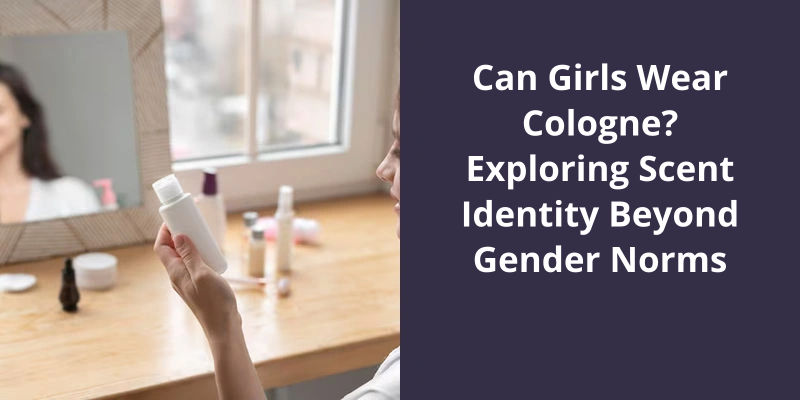Dry Down Perfume refers to the final stage of a fragrance’s evaporation process or how your perfume smells once it has settled down on your skin after a few hours of application. The significance of knowing about the dry down of perfume lies in the fact that it gives you the true essence of the scent since it lasts the longest, compared to the top and middle notes. Therefore, when choosing a perfume, it’s essential to wait and smell the dry down before making your decision because that’s the scent that’s going to stay with you.

What Does Dry Down Mean in Perfume?
When purchasing a perfume, it’s essential to understand the different stages of the scent. One of the most critical phases of a fragrance is the dry down. This final stage is what remains once the top and middle notes have dissipated, and it’s responsible for creating the lasting impression of the perfume on the skin.
The ingredients used in the base notes of a perfume can significantly impact the dry down. Woodsy scents like sandalwood and cedar can create a warm, amber-like effect, while musk and vanilla can add a sensual, creamy quality. Amber, patchouli, and leather are often used to create a deep, rich scent that lingers on the skin.
Perfumers carefully evaluate the base notes and tenacity of a scent during this final stage to ensure the perfect balance of longevity and power.
Understanding the different notes of a fragrance is key to deciphering the complex world of perfumes. One term that’s often used in fragrance is “dry.” But what exactly does dry mean when applied to a perfume? This term is commonly used to describe a perfume that isn’t sweet, and it’s analogous to the terminology used to describe wine. Let’s explore this concept more to gain a deeper understanding of dry notes in a fragrance composition.
What Are Dry Notes of a Fragrance?
Dry notes of a fragrance refer to the aspect of the scent that isn’t sweet or syrupy. These are the notes that give a perfume it’s depth and complexity, and make it more interesting and nuanced. In contrast to the top notes that are immediately noticeable when a fragrance is first applied, the dry notes are the ones that linger for hours after the fragrance has been spritzed on. They can include a wide range of scents, from woody and earthy aromas to powdery and musky undertones.
In other words, a dry perfume is one that’s less sweet and more sophisticated. Think of it like drinking a full-bodied red wine instead of a sugary cocktail.
One thing to note about dry perfumes is that they tend to be more unisex or masculine in nature, since the dryness of the scent profile doesn’t lend itself as readily to the bright and floral feminine scents that many women prefer. Ultimately, the choice of fragrance is a personal one, and what smells “dry” or “sweet” to one person may not be the same for another.
These notes can be derived from natural botanicals or synthetic aromachemicals, and can be blended with other scents to create a complex and multidimensional fragrance.
Examples of Popular Fragrances With Prominent Dry Notes
Some popular fragrances that are known for having prominent dry notes include Chanel No. 5, Dior J’adore, Tom Ford Oud Wood, Gucci Guilty Black, and Calvin Klein Euphoria. These fragrances typically have woody, earthy, or musky scents that provide a dry and distinctive aroma.
Source: Dry vs Sweet vs Bitter : Perfume Descriptors (New Video)
When it comes to wearing perfume, one important factor to consider is how long the scent will last. The base notes or “dry down” of a fragrance is typically what lingers on the skin for hours after application. In general, this can last from four to six hours, though it can vary based on a number of different factors. The type of skin you have, as well as the strength and notes of the perfume, can all impact how long the scent will last on you. Additionally, the way in which you apply the perfume can also have an impact on it’s longevity.
How Long Does a Perfume Dry Down?
– usually last longer than the lighter, fresher top notes. However, it’s worth noting that the dry down can differ depending on the individual and environmental factors. The temperature, humidity, and even air pressure can all impact the scents longevity.
When it comes to how long a perfume lasts, it’s important to consider the concentration of the fragrance. Eau de Parfum usually has a higher concentration of fragrance oils than Eau de Toilette or Cologne, and therefore lasts longer. Additionally, certain ingredients are more long-lasting than others. Natural raw materials like sandalwood, patchouli, and musk tend to linger on the skin for hours.
Perfume also dries down differently on different skin types. Those with drier skin may find that the scent evaporates more quickly, while those with oilier skin will likely have a longer-lasting scent. It’s also worth noting that peoples individual body chemistry can influence how a perfume smells and how long it lasts. This is why it’s important to try out a fragrance before committing to a full bottle.
In terms of the actual dry down process, it usually starts a few minutes after the fragrance is applied. The top notes – the initial burst of scent – fade away, leaving the heart or middle notes to come through. Eventually, these too will dissipate, leaving the base notes to be the dominant scent. As time goes on, the fragrance will continue to evolve on the skin, but the base notes will be the most prominent.
Overall, the length of a perfumes dry down can vary from person to person and scent to scent. However, as a general rule, the base notes will last around four to six hours. To prolong the longevity of a fragrance, it’s recommended to apply it to pulse points such as the neck, wrists, and inside elbows. Additionally, layering the fragrance with matching body products like lotions and shower gels can help to enhance the scents staying power.
How to Choose a Fragrance That Lasts Longer on Your Skin Type
- Know your skin type.
- Choose fragrances with stronger base notes like musk, vanilla, and sandalwood for dry skin.
- Opt for fragrances with lighter and fresher scents like citrus, lavender, and green tea for oily skin.
- Consider fragrances with a higher concentration of oils like eau de parfum instead of eau de toilette.
- Test fragrances on your skin before buying them and let them sit for a few hours to see how they develop.
- Apply fragrance to skin that’s hydrated, like after a shower or moisturizing, to help it last longer.
- Don’t rub your wrists together after applying fragrance as it can alter the scent and make it wear off faster.
- Store fragrances in cool, dark places away from sunlight and heat to preserve their scent.
Understanding the nuances of different phrases and idioms can be a tricky task, especially when two seemingly similar ones have completely different meanings. In this article, we will explore the difference between “dry up” and “dry down” and uncover the contexts in which each phrase is used.
What Is the Difference Between Dry Up and Dry Down?
It will eventually fade away, or “dry down”. *The top notes of the perfume dried down, leaving a lingering base note.
Another difference between the two phrases is the direction of the action. “Dry up” implies that something is happening from a higher level to a lower level, such as a river drying up because it’s water source has diminished. “Dry down”, on the other hand, refers to something moving from a higher level to a lower level, such as the notes of a perfume gradually dissipating on the skin.
While they may seem similar on the surface, a closer look reveals distinct nuances that make each phrase unique. Whether youre talking about a river that’s dried up or a perfume that’s dried down, understanding these differences can help you communicate more effectively and avoid confusion.
Understanding the phases of a scent is crucial when it comes to selecting the perfect fragrance. From top notes to base notes, each phase plays a significant role in creating the overall scent experience. In this article, we will explore each phase in detail, highlighting what to expect during each stage and offering insights on how to choose a perfume based on your scent preferences.
What Are the Phases of a Scent?
The top notes are the initial impression of the scent, the first thing you smell when you spray it on your skin. They’re typically light, fresh, and airy, and usually last for the first few minutes after application. These notes are usually made up of citrus, floral and fruit aromas, which are designed to capture the attention of the wearer and those around them.
The middle notes, also known as the heart of the scent, are the body of the perfume. They appear once the top notes begin to fade away and can last anywhere from 30 minutes to a few hours depending on the formula of the fragrance.
Finally, there are the base notes which are the anchor of the scent. These fragrances are usually warm and heavy, giving the perfume it’s lasting scent. The base note is what you smell after the scent has set on your skin for some time, it’s what lingers for hours after the initial spray. The base notes are typically comprised of woodsy smells such as sandalwood or a musk-like aroma, with some perfumes containing other scents such as vanilla, patchouli, or amber.
The dry-down period is what happens after the scent has had time to settle on the skin, generally after a few hours have passed. At this point, the perfume will have lost some of it’s volatile compounds, and the remaining scent will have settled into a harmonious blend of the top, middle, and base notes. This is when the character of the scent will truly reveal itself to you, offering a unique experience based on your body chemistry and the scent youve chosen.
The way a perfume unfolds is determined by the concentration and nature of the molecules in the fragrance. This is why different fragrances can have vastly different scent profiles despite having similar notes. A skilled perfumer can work with these molecules to create a balanced and harmonious fragrance with a distinct character, allowing the scent to evolve and change throughout the day, captivating those around the wearer. Overall, perfumes are crafted with careful attention to detail to ensure that each stage of the scent is experienced to it’s fullest, providing a sensory delight to those who wear them.
Watch this video on YouTube:
Conclusion
This process is influenced by various factors, including the fragrance notes, climate, and skin type. A well-designed perfume should have a balanced and harmonious dry down that complements the initial scent and creates a lasting impression. Understanding the dry down of a perfume can enhance one's appreciation and selection of fragrances, as well as help in identifying quality products. As with any art form, perfume making is a complex and subjective process that requires expertise, creativity, and attention to detail.





